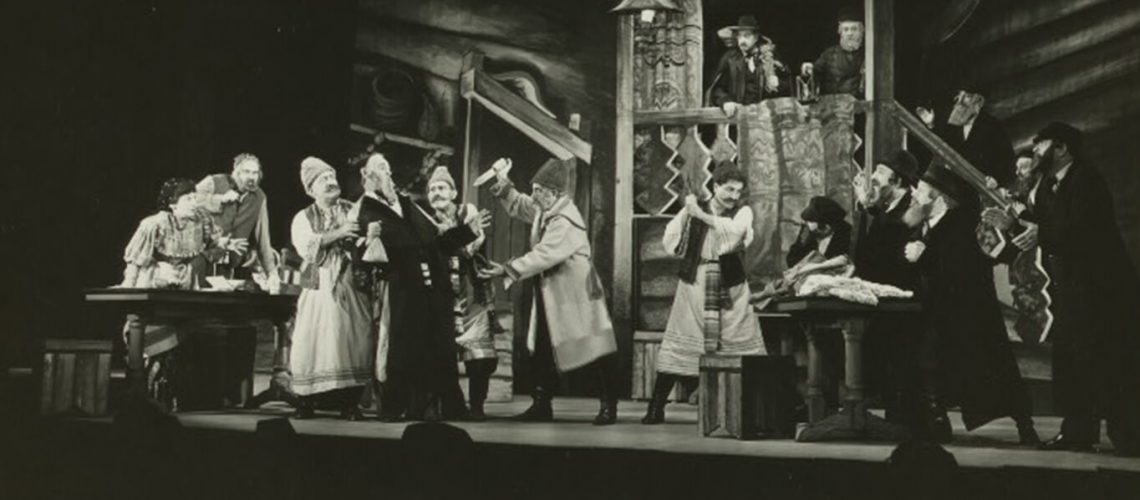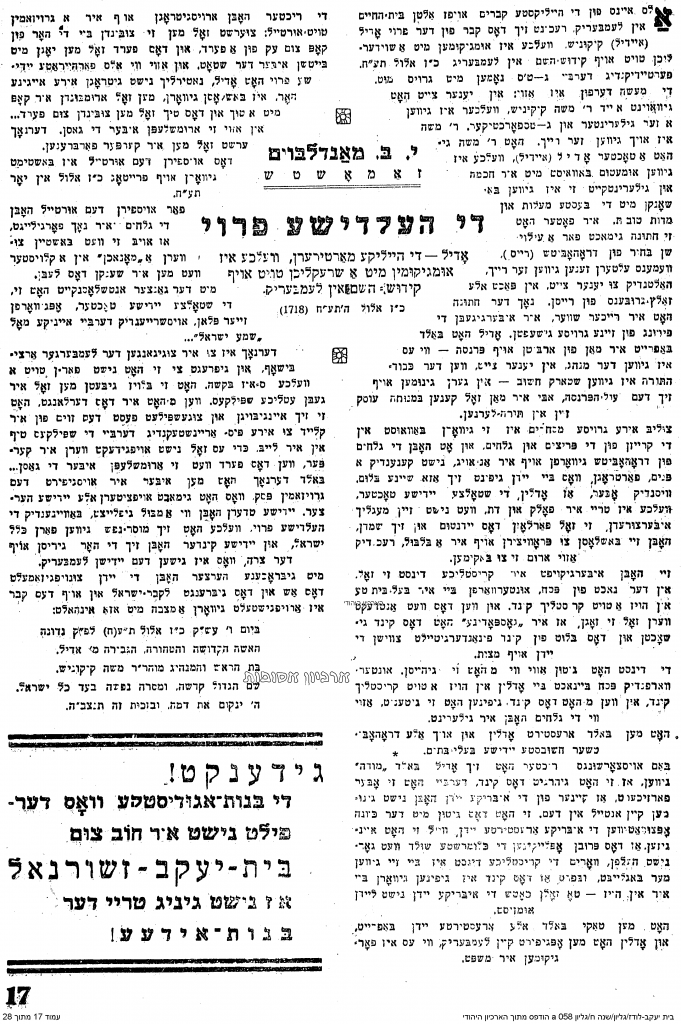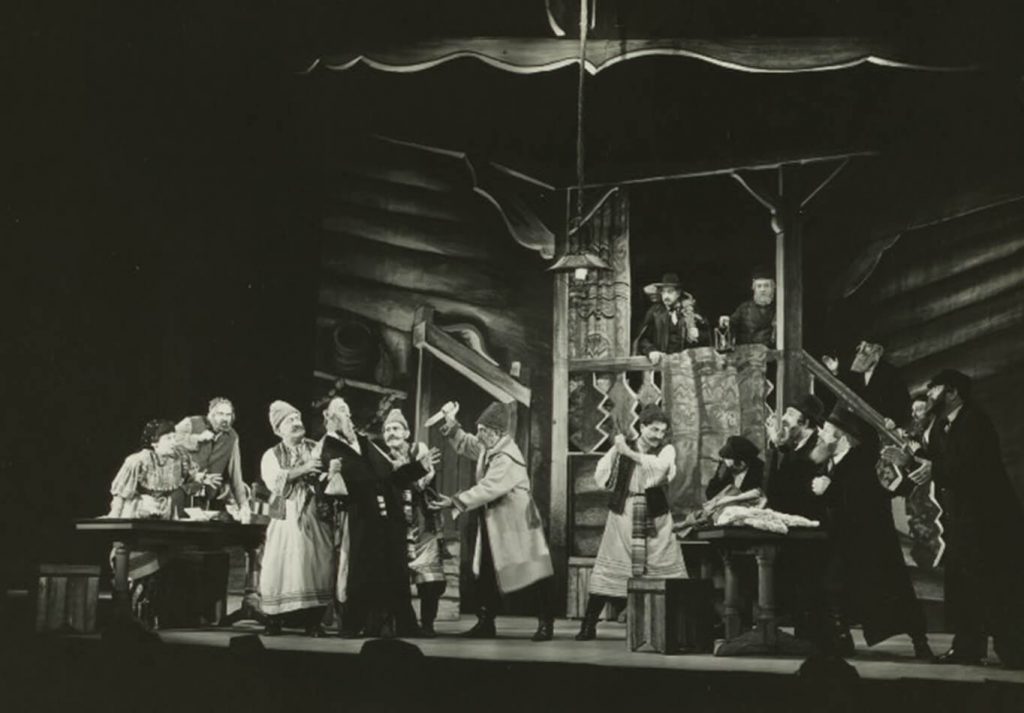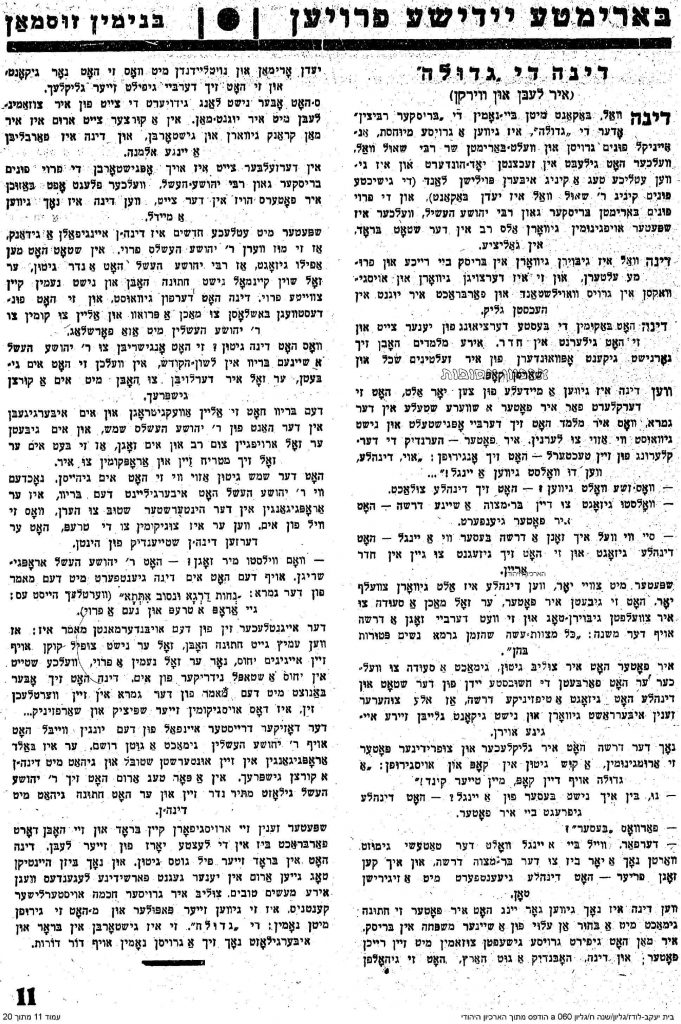The story of the 93 Bais Yaakov girls from the Krakow Teachers’ Seminary who committed suicide rather than be taken as prostitutes by German soldiers is well known in Orthodox circles. But before it was created, perpetuated, and commemorated in various ways, there were other stories of virtuous women that taught young Orthodox girls how to become good Jewish women, wives, and mothers. Reading the Bais Yaakov Journal, I was often struck by the extravagant if not impossible ideal that was presented to young women: these were stories that recommended that they not only live a Jewish life, but also be prepared to die a holy Jewish death.
This same story, it should be mentioned, appears in a slightly different form in I.L. Peretz’s story, “The Three Gifts”, where the secular writer ironizes this tale of ultimate sacrifice by having the angels who collect the pins after the girl’s death pronounce them as “useless” but beautiful.
But there was nothing ironic about how the story was retold in Bais Yaakov, not only in the interwar period but afterward, as well. The grotesque and pious story may have left an impression, as well, on the unfortunate young woman who (it seems) threw herself out of a high window in the Krakow Seminary in the autumn of 1934. One piece of evidence reported by the Polish Jewish press suggesting that she had committed suicide rather than had a terrible accident is that the body was found with a dress wrapped around the legs, as if, even in the extremity of her emotional situation, the young woman still upheld the archetypal Bais Yaakov value of modesty. Read our blog post about this incident »
The Jewish holidays were also an opportunity for the Bais Yaakov Journal’s writers to tell tales of virtuous women, some of whom were also martyrs. In issue 49 (1929-1930) Hanukkah becomes a time to commemorate the story of Hannah, who sacrificed her seven sons “al kiddush hashem”. Hannah encouraged them not to give up their Jewish faith, even at the cost of their lives, and she watched them being murdered in front of her eyes. Hannah claims (as she does in rabbinic literature) to be more righteous than Abraham: while he sacrificed one son to God, she sacrificed seven.
It is maybe worth mentioning that these tales were written by men (by Y. B. Mandelbaum, Israel Emiat, and Moshe Tzinowitz accordingly) and addressed young girls, teaching them the values they should aspire to. These stories saddened me, suggesting that the male writers of the Bais Yaakov Journal saw women only through the lens of their bodies, praising them only for their sexual modesty, or valuing them only for these extreme acts rather than their everyday virtues. But then I read the story of “Dina the Great”. This piece, published in issue 60 (1930) written by Benjamin Zisman, tells the story of the “Rebbetzin of Brisk”. Dina was born to a wealthy orthodox family and was recognized as a bright child from an early age. Her father encouraged her to learn, and she was determined to prove that she was as smart as the boys, composing a beautiful sermon (drasha) for her twelve birthday. As an older woman, she was appreciated for her good heart and charitable ways. She was a good wife, but her husband died young, and she became a young widow. Dina took her fate into her own hands and decided she should become Rabbi Yehoshua Heschel’s second wife. She wrote him a letter in Hebrew, impressing him deeply. Although he had vowed not to remarry, when he met this remarkable woman, who cited rabbinic passages on why they should be wed, he changed his mind. Thus she secured herself the mate she desired by her intelligence and knowledge.




